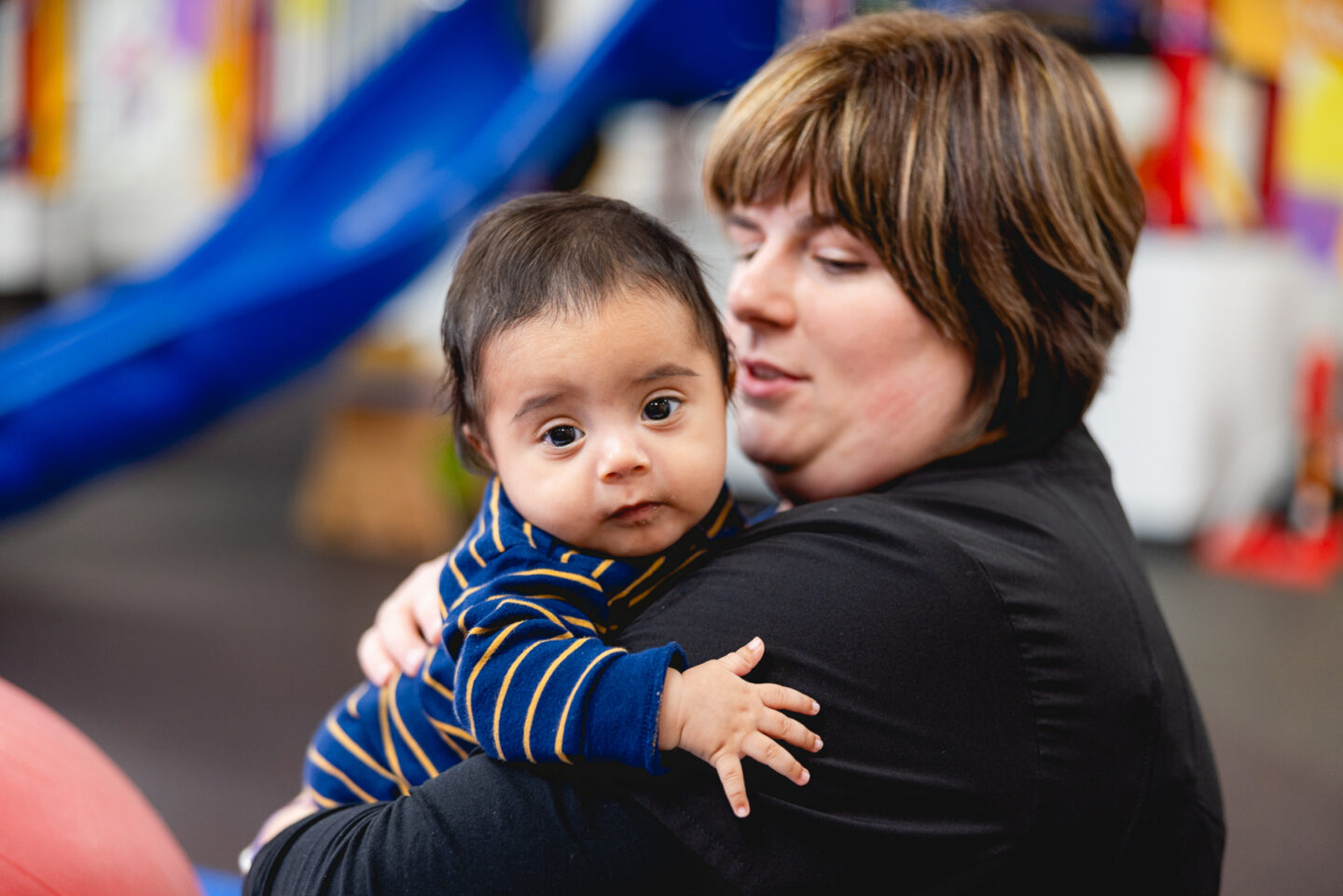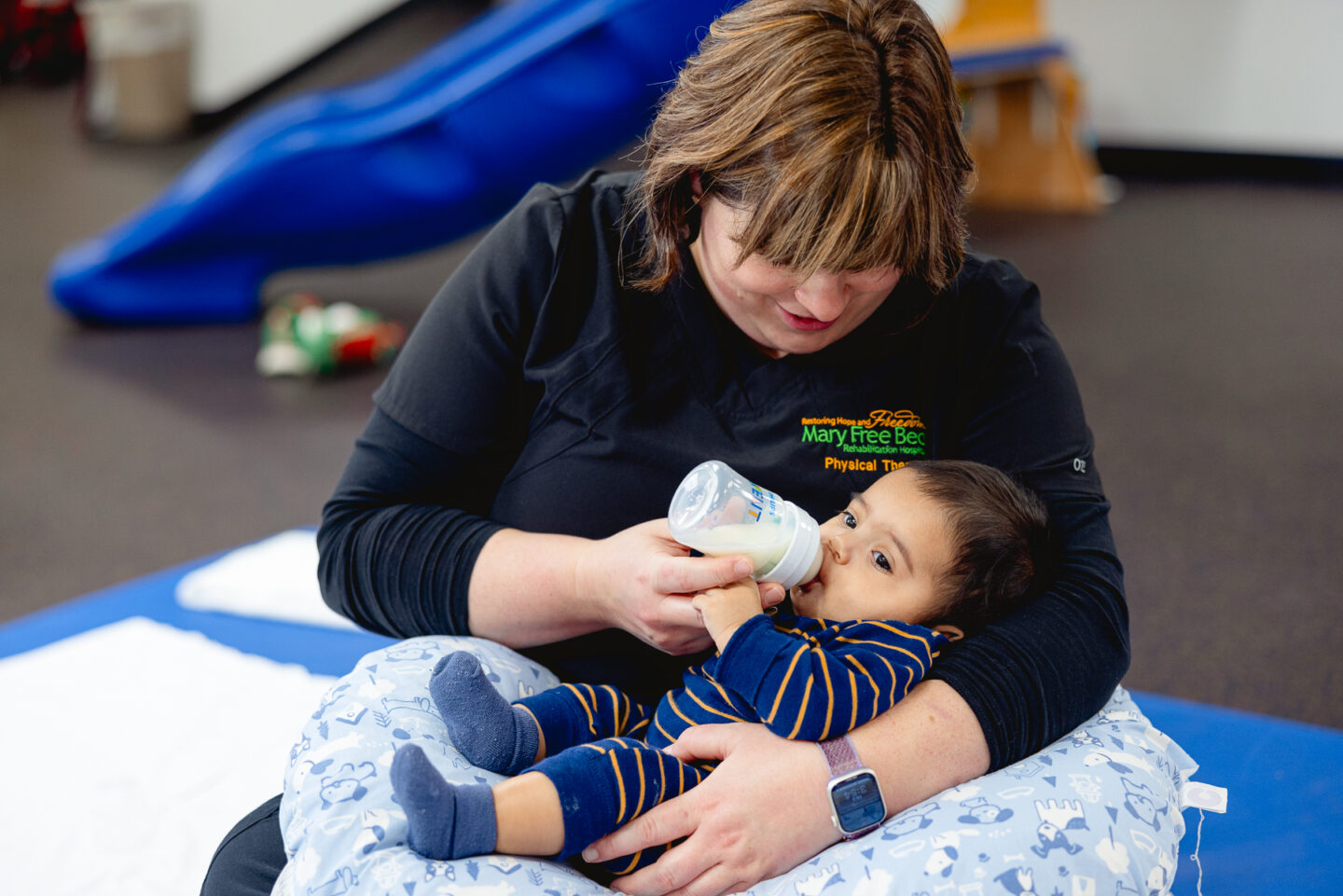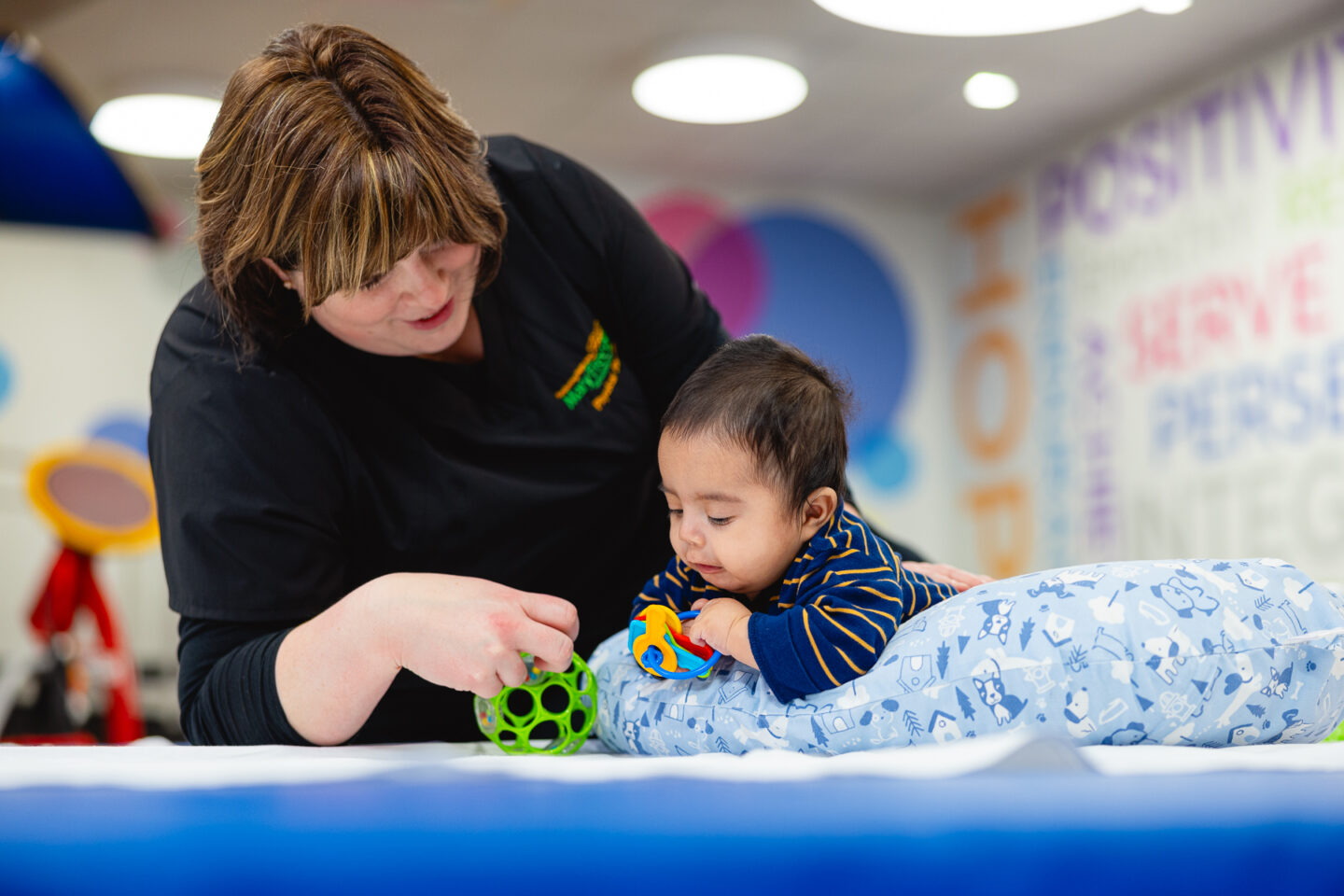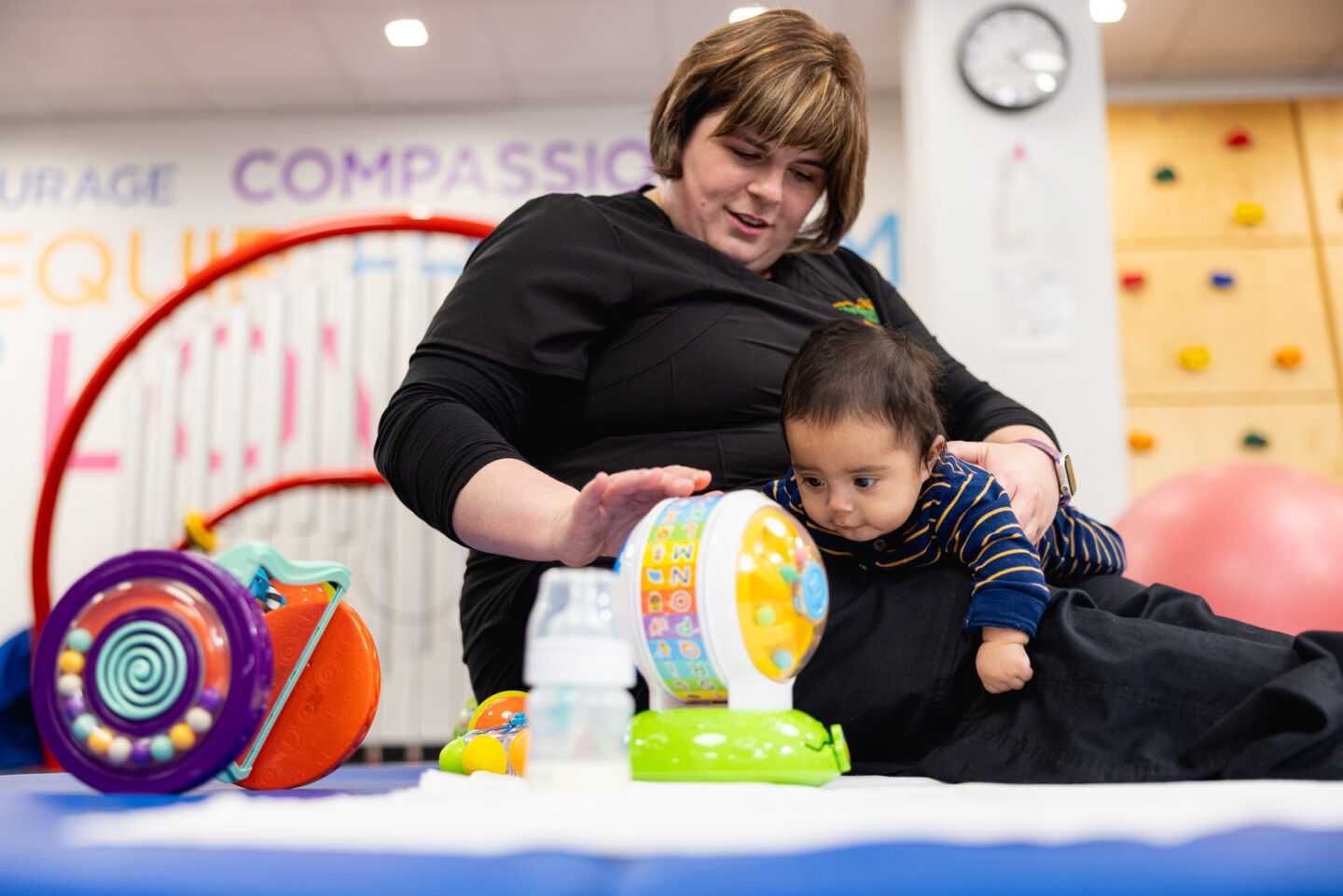Your Guide to Tummy Time
SUPERVISED ACTIVITIES TO HELP YOUR BABY GROW
The American Academy of Pediatrics recommends babies:
- Sleep on their backs for safety.
- Play on their tummies to help them grow.
Remember this helpful phrase: “Back to sleep, tummy to play.”

What is tummy time?
Tummy time is dedicated time spent with your baby on their stomach. It can be done just about anytime, anywhere.
- Short periods of time on the belly
- A fun time to play, interact and bond
- Always when your baby is awake
- Always supervised
Why is tummy time important?
All babies need supervised tummy time. Daily tummy time helps your baby achieve important milestones – like reaching on their belly, rolling and crawling. It seems simple, but there are big benefits.
Tummy time helps to:
- Enhance coordination and improve motor skills.
- Support feeding and speech development.
- Strengthen the head, neck and shoulders.
- Maintain a round head shape and prevent flat spots.
When can we start tummy time?
It’s never too early to begin tummy time! You can start the day your baby arrives home from the hospital.
Start slowly with sessions that are just a few minutes long, several times a day. Mary Free Bed’s pediatric specialists recommend working up to 15 – 30 minutes of tummy time by the time your baby is 7 weeks old. Tummy time will increase and improve as your baby gets stronger.
Proper Alignment
Midline alignment is when your baby’s head and body are straight – whether on their back, stomach or sitting up. Your baby should be able to move in and out of midline. This helps improve eye-hand-head coordination and balance during your baby’s first year.
Like all of us, your baby needs to eat, sleep and be active. The way your baby is positioned during these tasks helps build strong muscles.
Watch the video to see proper alignment for the following daily activities:
Feeding
Burping
Diapering
Riding in a car seat
Sleeping
Your baby learns to move by playing on the floor on their tummy, back and sides. Remember, positioning is important!
Watch the video for positioning for the following playtime activities:
Tummy
Tummy – over a Boppy™ pillow
Playing on side
Back
Back, with feet support
Back, with towel support
Playing with toys
Sitting
Carrying or holding
At first, your baby might have a hard time staying on their tummy. They can tire easily and cry.
Tummy time alternatives help make it a little easier – at least until your little one is strong enough to lay on the floor. Start by putting your baby on your chest or lap, then move to a blanket.
Watch the video to learn positioning for the following activities:
Laying baby across your lap
Baby laying on your chest
Baby laying on an exercise ball
Have a ball!
Tummy time can be hard work for babies – keep it fun and interesting!
Here are some tips to make the most of your playtime together:
- Minimize time in a bouncy chair, car seat, positioning seat, swing, walker or exersaucer.
- Slowly increase floor time with frequent bursts of engaging activities.
- Try a variety of different toys and textures.
- Play music.
- Get on your tummy, too! Making eye contact with your baby is motivational, and they’ll want to lift their head to see you.
- Encourage and celebrate!
Ask For Mary
If you have concerns about your baby’s development, talk to your pediatrician or family physician. Your doctor may refer your little one to Mary Free Bed’s outpatient pediatric program for physical or occupational therapy.





